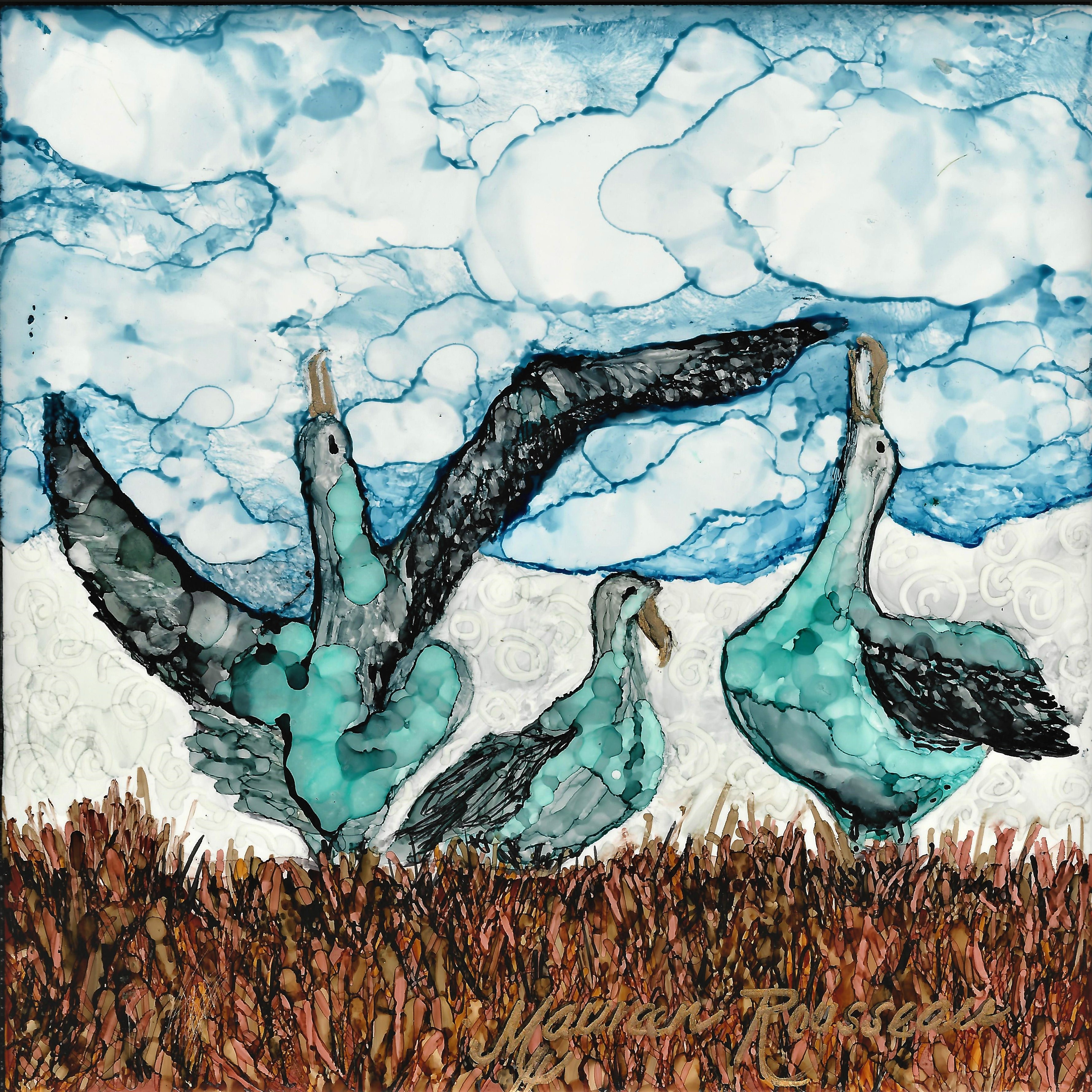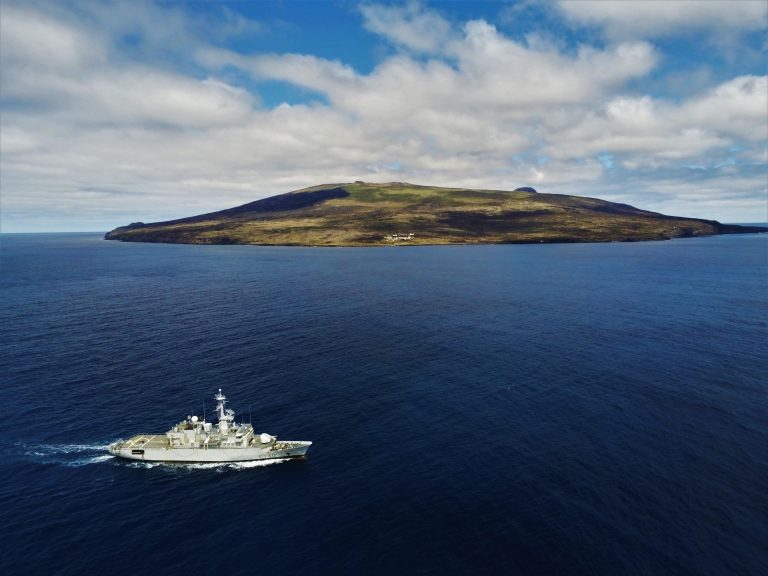
“Wandering Albatrosses courting” by Maureen Rousseau of Artist & Biologists Unite for Nature (ABUN) for World Albatross Day 19 June 2020, after a photograph by Michelle Risi
Augustin Clessin (Centre d’Ecologie Fonctionnelle et Evolutive, Université Montpellier, France) and colleagues have pre-published in bioRxiv preprint on records of highly pathogenic avian influenza detected in the French sub-Antarctic islands of Possession, Crozets and Kerguelen, including in Vulnerable Wandering Albatross Diomedea exulans chicks. The paper follows on from an earlier reports of HPAI on sub-Antarctic islands in ACAP Latest News.
The paper’s abstract follows:
“Since 2020, the outbreak of highly pathogenic avian influenza (HPAI) virus l; clade 2.3.4.4b has turned into the largest documented panzootic to date, reaching the sub-Antarctic region and Antarctica via the tip of South America in 2023. Here, we describe its recent arrival into the Indian Ocean sub-Antarctic archipelagos of Crozet and Kerguelen, where we first detected the virus in October 2024 in dead southern elephant seals, king penguins, gentoo penguins, brown skuas and kelp gulls. While the panzootic is ongoing, it has already caused unprecedented and alarming mortalities of southern elephant seals. We collected brain swabs from various seal and bird carcasses, subsequently isolated the virus and obtained 25 novel HPAI H5N1 clade 2.3.4.4b sequences. Our phylogenetic and phylogeographic analyses show that there have been independent introductions of the virus to Crozet and Kerguelen, from the distant South Georgia Islands in the Southern Atlantic, and not from the more nearby coasts of South Africa. Our results point to a year-long gap in genomic surveillance in the south polar region, obscuring how HPAI H5N1 clade 2.3.4.4b is spreading in the sub-Antarctic and illustrating the difficulties in tracking pathogen dispersal in the region. Locally, our phylogenetic analyses show that the virus is transmitted between different species. Moreover, our serological analyses show that some southern elephant seal pups had mounted an anti-H5 antibody response. With the spread to Crozet and Kerguelen, HPAI H5N1 2.3.4.4b is moving ever closer to Australia and New Zealand, which currently remain free from infections with this strain, and represents a major threat to the sub-Antarctic wildlife. Our results provide key elements to enable stakeholders to anticipate the arrival and spread of the virus in remote areas of critical wildlife conservation concerns.”
Read a popular account of HPAI in Antarctica and on sub-Antarctic islands here.
ACAP has chosen “Effects of Disease” as its theme for this year’s World Albatross Day on 19 June.
Reference:
Clessin, A., Briand, F.-X., Tornos, J., Lejeune, M., De Pasquale, C., Fischer, R., Souchaud, F., Hirchaud, E., Bralet T., Guinet, C., McMahon, C.R., Grasland, B., Baele, G. & Boulinier, T. 2025. Mass mortality events in the sub-Antarctic Indian Ocean caused by long-distance circumpolar spread of highly pathogenic avian influenza H5N1 clade 2.3.4.4b. bioRxiv preprint.
John Cooper, Emeritus Information Officer, Agreement on the Conservation of Albatrosses and Petrels, 17 March 2025




 |
| 
 English
English  Français
Français  Español
Español 

 Amsterdam Island with the French surveillance frigate, Floréal, photograph by the Marine nationale
Amsterdam Island with the French surveillance frigate, Floréal, photograph by the Marine nationale
 Flesh-footed Shearwater, hand-coloured lithograph by
Flesh-footed Shearwater, hand-coloured lithograph by 
 The 15th International Effects of Oil on Wildlife Conference (
The 15th International Effects of Oil on Wildlife Conference (